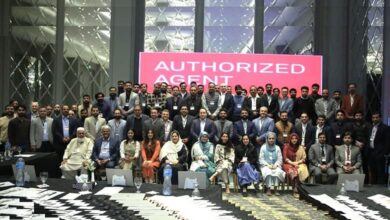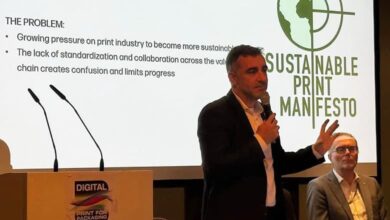Interpack 2014, world’s landmark event for the packaging sector and related processing industries opened its doors on May 8th. The exhibition will go on until May 14th. The companies are coming to Düsseldorf from about 60 countries and are occupying about 174,000 square metres of net space.
Interpack is reinforcing its role by offering visitors special topics alongside the extensive range of offerings provided by exhibitors. “Components for processing and packaging” is an event being staged for the first time in 2014 as an additional exhibition for suppliers to the packaging industry. Companies who are engaged in drive, control and sensor technology, products for industrial image processing, handling technology, industrial software and communication, and complete automation systems for packaging machinery, are exhibiting in the Düsseldorf “Stadthalle.
One day before Interpack opened its doors, the SAVE FOOD Congress will already commenced in the Congress Centre South (CCD Süd). This two-day event is directed at both non-profit organisations and industry. It highlights the topics of global food loss and food waste and explores the aspects involved, addressing a broad public audience. Building on the foundation established in 2011, Interpack will thus again provide a unique international platform for exchanges between all those concerned with this critical issue. The SAVE FOOD initiative is a co-operation between the Food and Agriculture Organisation of the United Nations (FAO) and Messe Düsseldorf.
First Interpack for BOBST
BOBST one of the major announces its participation at Interpack 2014, Düsseldorf, in hall 8A, stand C15. “For BOBST, participation is a premiere but with Interpack being an exhibition that attracts worldwide visitors and exhibitors across the entire supply chain of the packaging industry we decided to take advantage of the opportunity of meeting industry professionals from the whole world and informing them about our cutting-edge technologies for printing and converting”, says Eric Pavone, Business Director Web-fed.
Of particular interest for the packaging of food are Bobst’s latest solution for barrier coating. One such technology is BOBST’s AlOx process which results in clear film with good water and oxygen barrier. AlOx also enables lower production costs as the process requires only a fraction of the thickness of the equivalent atmospheric coatings. The process can be used for goods where product visibility is required such as baked goods and microwaveable food.
Printed Electronics take centre stage
Packaging is going through its own rapid development and evolutions. Smart packaging is more in demand now and a key element for smart packaging is printed electronics.
An interactive business card with a flexible display, a “speaking” package or a board game with a printed battery and glowing OLEDs – the possibilities and fields of application for printed electronics are manifold. Logistics benefits particularly from RFID chips that store data and relay them via contactless readers to a central system and thus help to monitor the goods chain and combat product piracy. The huge potential for printed electronics will in fact only become truly apparent when its use makes economic and practical sense not only on the outer package, but also on the individual product. And strong growth is in the offing for intelligent packages that combine such elements as sensors, batteries, displays, logistics and RFID.
The possibilities are manifold, the potential vast and the market is rapidly growing: Frost & Sullivan’s study entitled “Impact of 2020 Megatrends on Chemicals” sees organic electronics as a megatrend. The growing importance of the sector is additionally demonstrated by a report from Markets and Markets which forecasts an over 100 per cent increase in sales of organic and printed electronics to about USD 25 billion by 2015.
Messe Düsseldorf is responding to this trend and, in cooperation with ESMA (European Screen Printing Manufacturers Association), has developed the PEPSO – Printed Electronic Products and Solutions events strategy. The theme is being promoted at a joint stand at interpack 2014. PEPSO was premiered at the print media fair drupa 2012, followed by the medical technology fair COMPAMED 2013, the rubber and plastics fair K 2013 and Euroshop 2014.
The PEPSO Pavilion at interpack 2014 is bringing the following companies and institutions together: ThinFilm Electronics (Norway), Printed Electronics Ltd. (UK), Printcolor (Germany), Fraunhofer Institute for Modular Solid State Technology (Germany) and cooperation partner ESMA. Visitors to the exhibition centre who want to be shown the latest innovations in printed electronics will find the trade fair locations of all the companies conducting research or manufacturing in this sector in the Printed Electronics Products Roadmap. A constant stream of current information on PEPSO is available at www.pepso-global.de.
HP And Comexi Group Join Hands
During recently held Interpack HP announced a strategic agreement with Comexi Group, a major flexible packaging machinery manufacturer, to develop a dedicated lamination solution optimized for the HP Indigo 20000 Digital Press.
Lamination is a major part of the flexible packaging conversion process. Current solutions have long set-up cycles for each job, and converters need to wait several days for complete curing and delivery, which creates a bottleneck and impacts time-to-market.
 The Comexi NEXUS L20000 is the first dedicated end-to-end lamination and coating solution for digitally printed flexible packaging. Available in inline or offline configurations, the Comexi NEXUS L20000 will offer solvent-free lamination to help flexible packaging converters shorten time-to-market, as well as help reduce waste and environmental impact.
The Comexi NEXUS L20000 is the first dedicated end-to-end lamination and coating solution for digitally printed flexible packaging. Available in inline or offline configurations, the Comexi NEXUS L20000 will offer solvent-free lamination to help flexible packaging converters shorten time-to-market, as well as help reduce waste and environmental impact.
“Shorter product life cycles and customized packaging are driving growth in short-run jobs that demand fast turnaround times,” said Ramon Xifra, vice president, Comexi Group. “The new Comexi NEXUS L20000 with the HP Indigo 20000 will enable flexible packaging converters to meet these demands and grow their businesses.”
The HP Indigo 20000 is a mid-web digital press that helps meet the needs of flexible packaging converters for short runs. It provides converters the ability to produce several different items around a common design, then customize each one by changing the colors, images and language. Additionally, the press’s 762-mm/30-inch width and ability to print on a wide variety of substrates and film (from 10 to 250 micron) gives converters market versatility.
Going from computer to press without producing plates helps increase speed to market, improve production flexibility and reduce packaging costs for short runs. HP Indigo’s digital, zero-setup process minimizes waste, translating into significant cost and time savings. On-demand digital printing also reduces waste and over-stocking throughout the supply chain, allowing converters to offer their end customers more sustainable packaging solutions.
HP says its liquid ElectroInk technology is the only digital color printing process that matches gravure printing. With seven ink stations, converters can meet the most stringent corporate branding requirements and achieve perfect color registration on all substrates. HP Indigo ElectroInk also is safe and suitable for printing on food packaging, under set conditions of use and compliance with Good Manufacturing Practices (GMP) for non-food contact surfaces.
Comexi Group will showcase the Comexi NEXUS L20000 in fall 2014. Availability is expected in early 2015.





